Occupational Environment Monitoring at Gas-Fired Thermal Power Factory
99,000 ₫
Note: The above price is calculated per sample and may vary depending on the area of the environment to be monitored and market fluctuations. For more accurate pricing support, please refer to the price list or contact our consulting staff directly.
Monitoring the environment of a gas-fired thermal power factory is a session for collecting, analyzing, and evaluating workplace factors that may be harmful to workers’ health.
Table of Contents
Toggle1. Overview of Gas-fired Thermal Power Factories
a. What is a Gas-fired Thermal Power Plant?
Plant gas-fired thermal power plant (also known as a natural gas thermal power plant) is a type of thermal power plant that uses natural gas as the main fuel to produce electricity. In a gas-fired thermal power plant, natural gas is burned in a combustion chamber to generate heat, which is then transferred to water to produce steam. This steam then drives a turbine to generate electricity.
Gas-fired thermal power factories have many advantages, including fast startup, high efficiency, and lower environmental impact compared to other fuel sources such as coal or oil. However, like any thermal power plant, gas-fired factories can generate emissions and impact the environment; therefore, the use of efficient emission control technologies is essential.

b. Production Stages in Gas-fired Thermal Power Factories
The operation of a gas-fired thermal power plant includes the following main steps:
- Natural gas combustion: Natural gas is fed into the combustion chamber, where it is burned with oxygen to generate heat. This combustion process produces heat and exhaust gases.
- Boiler: Heat from the combustion process is transferred to water in the boiler. Water is boiled and converted into high-temperature steam.
- Steam turbine: Steam from the boiler is used to rotate the steam turbine. The turbine generates mechanical energy and rotational motion, powering the generator.
- Generator: The generator converts the mechanical energy from the turbine rotation into electrical energy. Electricity is produced and supplied to the power grid.

c. Types of Machinery Used in Gas-fired Thermal Power Factories
In gas-fired thermal power factories, the main machinery is used to process, convert, and generate electricity from natural gas. Some commonly used machinery includes:
- Combustion Chamber: Where natural gas is burned with oxygen to produce heat. The chamber is specially designed to optimize combustion and generate high-temperature exhaust gases.
- Boiler: Transfers heat from combustion to water. Water is boiled and converted into high-pressure steam.
- Steam Turbine: Steam from the boiler rotates the turbine, converting thermal energy into mechanical energy, creating rotational motion.
- Generator: Converts mechanical energy from the turbine into electrical energy, which is supplied to the power grid for consumers.
- Control System: Important for adjusting and controlling the operation of machinery and processes in the plant.
- Cooling System: Used to cool critical equipment and machinery during operation, maintaining stable temperatures and ensuring efficiency.
- Emission Control System: Reduces emissions and pollutants generated from natural gas combustion. Technologies include SCR (Selective Catalytic Reduction), FGD (Flue Gas Desulfurization), and dust removal systems.

d. Occupational Diseases in Gas-fired Thermal Power Factories
Workers in gas-fired thermal power factories may be exposed to factors that cause occupational diseases. Common occupational diseases in such environments include:
- Respiratory diseases: Exposure to dust and toxic fumes from natural gas combustion, such as smoke, sulfur dioxide, nitric oxide, carbon monoxide, and fine particulates. This can lead to pneumonia, asthma, sinusitis, and other respiratory issues.
- Skin diseases: Contact with chemicals during gas processing can cause skin irritation, dermatitis, burns, and other skin conditions.
- Nervous system disorders: Pollutants and chemicals may affect the nervous system, causing headaches, dizziness, insomnia, and other neurological problems.
- Cardiovascular diseases: Factors such as noise, work pressure, and stress can cause hypertension, myocardial infarction, and heart rhythm disorders.
- Digestive system diseases: Exposure to chemicals may affect digestion, causing ulcers, colitis, and other gastrointestinal issues.

e. Gas-fired Thermal Power Factories in Vietnam
In Vietnam, several gas-fired thermal power factories are operational or under construction, including:
- Vung Ang 1 Gas-fired Power Plant: The largest in Vietnam, located in Vung Ang Industrial Zone, Ha Tinh Province, with a capacity of 1,200 MW, using natural gas as fuel.
- Nhon Trach 3 & 4 Gas-fired Power Factories: Located in Nhon Trach Industrial Zone, Dong Nai Province, with a total planned capacity of 1,500 MW using natural gas.
- O Mon 1 Gas-fired Power Plant: Located in O Mon Industrial Zone, Can Tho City, with a planned capacity of 750 MW using natural gas.
- My Xuyen Gas-fired Power Plant: Located in My Xuyen District, Soc Trang Province, with a capacity of 1,200 MW using natural gas.
These are examples of gas-fired thermal power factories in Vietnam, with additional projects in development to meet increasing energy demands and support the country’s economic and social development.
2. Overview of Occupational Environment Monitoring Services
a. What is Occupational Environment Monitoring in Gas-fired Thermal Power Factories?
Occupational environment monitoring (or workplace environmental measurement) in gas-fired thermal power factories involves collecting, evaluating, and analyzing workplace environmental indicators at the plant to implement timely measures, minimize environmental hazards to workers’ health, and prevent occupational diseases. Monitoring is mandatory for gas-fired thermal power factories.
This monitoring is crucial for protecting and enhancing workers’ health because employees are the primary resource and directly generate business profit. Workers regularly exposed to hazards exceeding permissible limits are at risk of health issues and occupational diseases.
REGISTER FOR OCCUPATIONAL ENVIRONMENT MONITORING SERVICE
b. Nam Viet’s Occupational Environment Monitoring Program
Nam Viet’s occupational environment monitoring program is designed by engineers specializing in labor safety and environmental protection. It uses modern measurement methods to monitor air, water, microclimate, physical factors, and dust in the workplace, ensuring worker health and safety.
Additionally, the program supports research and development of new solutions to improve workplace environmental quality. With a professional monitoring team, Nam Viet’s exclusive program represents a breakthrough in labor safety and environmental management in Vietnam.

c. Standardization in Workplace Environmental Measurement Procedures
Standardization ensures accuracy and reliability of monitoring results. The program follows recognized standards from Ho Chi Minh City Department of Health. Results are conducted by highly qualified monitoring specialists, ensuring managers can rely on them for accurate decisions in protecting worker health and the environment.
d. Monitoring Reports for Gas-fired Thermal Power Factories
Monitoring reports are prepared according to Form 04, Appendix III, Decree 44/2016/ND-CP, with two copies: one sent to the contracting plant and one retained by the monitoring organization.
Reports must be stored indefinitely in compliance with legal requirements.

e. Monitoring Frequency According to Law
According to Clause 2, Article 18, Labor Safety and Hygiene Law 84/2015/QH13, employers must organize workplace environmental monitoring to assess harmful factors at least once a year.
f. Deadline for Submitting Monitoring Reports According to Law
Reports must be submitted before December 31 each year to the local Department of Health where the plant is located and where workers are employed. When there are changes in technology or production processes, or during upgrades introducing new hazards, records must be updated, and monitoring conducted accordingly.
g. Penalties for Violating Workplace Environmental Monitoring Regulations
According to Article 27, Decree No. 12/2022/ND-CP dated 17/01/2022:
- Clause 2: Fine of 2,000,000 – 5,000,000 VND for failing to publicly inform workers about monitoring results and hazard assessments immediately after they are available.
- Clause 3: Fine of 20,000,000 – 40,000,000 VND for failing to conduct environmental monitoring to control hazards affecting workers’ health according to law.
- Clause 4: Fine of 40,000,000 – 60,000,000 VND for collaborating with monitoring organizations in fraudulent activities, but not to the level of criminal liability.
3. Harmful environmental factors for workers in gas-fired power factories
Workers in gas-fired power factories may be exposed to certain harmful environmental factors. Below are some potentially harmful environmental factors in the working environment of gas-fired power factories:
- Emissions: The combustion process of natural gas in gas-fired power factories produces emissions that can be harmful to health, such as sulfur dioxide (SO2) vapor, nitric oxide (NOx) vapor, carbon monoxide (CO) vapor, and other pollutants. Prolonged exposure to these emissions can cause respiratory problems, lung damage, and other health issues.
- Dust and fine particles: The handling and transportation of natural gas in gas-fired power factories can generate dust and fine particles. Exposure to dust and fine particles can cause respiratory issues such as pneumonia, rhinitis, sinusitis, and other problems.
- Noise: Some equipment in gas-fired power factories can generate high noise levels. Continuous high-intensity noise can cause hearing problems, stress, and affect overall worker health.
- Temperature and pressure: In some areas of gas-fired power factories, temperature and pressure may be higher than typical working environments. Working in high temperature and pressure conditions can cause heat stress and health impacts, leading to fatigue, exhaustion, and risk of burns.
- Chemicals: During the natural gas handling process, chemicals may be used to treat and adjust the process. Exposure to these chemicals can cause skin irritation, rhinitis, throat inflammation, and other health problems.
4. Measures to improve the working environment in gas-fired power factories
Improving the working environment in gas-fired power factories is an important process to protect health and ensure safety for workers. Below are some measures that can be applied:
- Emission management and control: Use advanced technology to reduce pollutant emissions, such as SCR (Selective Catalytic Reduction) and FGD (Flue Gas Desulfurization) systems. This helps remove or reduce harmful substances in emissions.
- Dust treatment systems: Use dust cleaning systems such as dust filters and dust recovery systems to reduce dust dispersion in the working environment. This helps prevent exposure to dust and fine particles.
- Noise assessment and management: Conduct noise assessments in working areas and apply measures to reduce noise to safe levels. This may include using soundproofing materials, insulation, noise barriers, providing hearing protection, and complying with noise regulations.
- Temperature and pressure adjustment: Provide cooling systems, ventilation fans, and temperature control systems to ensure a comfortable and safe working environment. Pressure control should also be performed to reduce risks from high pressure.
- Training and awareness enhancement: Train workers on hazards and safety measures in gas-fired power factory environments. Increasing awareness of harmful environmental factors and safety regulations is important for workers to protect themselves.
- Periodically organize occupational environmental monitoring in factories, collect and analyze harmful factors for workers, and adjust to reduce hazards to prevent occupational diseases for them.
5. Benefits of regular monitoring in gas-fired power factories
An Toan Nam Viet provides businesses with excellent advantages when using occupational environmental monitoring services according to Decree 44/2016/ND-CP on management and control of harmful factors in the working environment affecting workers.
- Businesses can proactively control harmful factors in workshops or factories.
- Receive advice and recommendations on measures to reduce harmful factors and improve the quality of the working environment.
- Indirectly protect human resources, the key factor in business development.
- Reduce the impact of occupational diseases on human health, thereby reducing future treatment costs.
- Improved worker health leads to better product quality and production output.
- Comply with labor safety laws, avoiding legal risks.
- Create credibility and professionalism in all aspects, enhancing the company’s brand.
Nam Viet’s environmental monitoring service is a solution to reduce the impact of occupational diseases, contributing to a clean and quality working environment.

REGISTER FOR OCCUPATIONAL ENVIRONMENTAL MONITORING SERVICE
6. National Occupational Environmental Monitoring Center
Occupational Environmental Monitoring Center of Nam Viet is a professional unit specializing in monitoring and measuring the quality of the working environment across all provinces in Vietnam. With a team of experienced monitoring specialists, the center uses modern measurement equipment to ensure accuracy and reliability.
Besides providing monitoring services, the center also assists customers in planning, handling, and tracking occupational environmental issues. With the motto “customer-centered,” the center prioritizes customer satisfaction, meets all customer needs, and commits to providing the best solutions for businesses.
REGISTER FOR OCCUPATIONAL ENVIRONMENTAL MONITORING SERVICE
With investment in technology, equipment, and human resources, Nam Viet’s monitoring center has become one of the most reputable units in occupational environmental monitoring in Ho Chi Minh City with the following objectives:
- We always value brand reputation and the quality of our services.
- We provide customers with the best and most suitable solutions.
- With a team of experienced Masters and Engineers committed to environmental protection and business benefits.
- By joining Nam Viet Environmental Monitoring team, your company will receive professional service from experts in the field of monitoring, along with the best cost advantages.
The occupational environmental monitoring process at Nam Viet includes the following basic steps:
- Before performing monitoring, we ensure all machines and equipment for occupational environmental monitoring are calibrated according to legal regulations.
- Perform the monitoring process in full compliance with the procedure committed to the Department of Health.
- Report occupational environmental monitoring results honestly to the employer.
- If monitoring results show unsafe conditions for workers, Nam Viet will provide solutions, and the enterprise will implement as follows:
- Implement measures to improve working conditions to minimize the impact of harmful factors and prevent occupational diseases.
- Organize health check-ups to detect occupational and work-related diseases early for employees in unsafe working environments.
- Provide material compensation to employees according to labor law regulations.

7. Occupational Environmental Monitoring Pricing
To help businesses perform occupational environmental monitoring professionally and effectively, Nam Viet provides customers with a pricing table for occupational environmental monitoring services that is high-quality and reasonably priced.
- Our pricing table provides detailed information on the costs of the monitoring services we offer, including costs related to travel, measurement, analysis, and reporting. Customers can be assured of the accuracy and reliability of the monitoring results we provide.
- We commit to providing competitive and reasonable prices in the market and are always ready to answer any questions about monitoring services quickly and professionally.
- With Nam Viet’s pricing table, customers can easily choose service packages suitable for their needs. We are committed to providing the highest customer satisfaction with professional service quality.
1 review for Occupational Environment Monitoring at Gas-Fired Thermal Power Factory
No comments yet

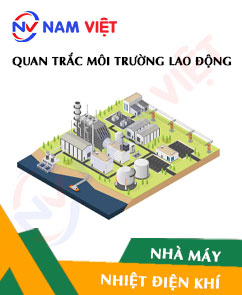
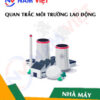
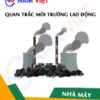


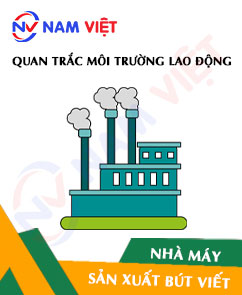




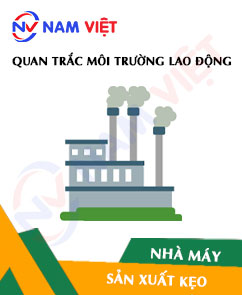
maituyet.cuong12
Professional labor environment monitoring unit